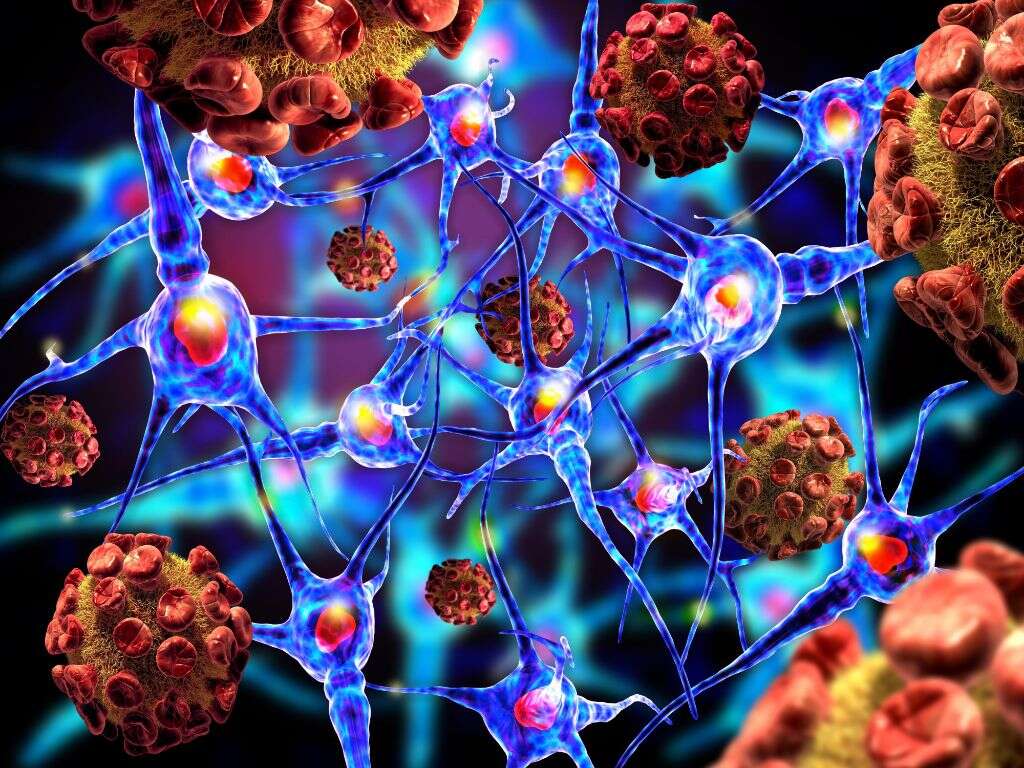10 Huntington's Disease Symptoms
Huntington’s disease is a rare inherited condition that causes loss of neurons in specific parts of the brain. It is described as an autosomal dominant condition, meaning that it only takes one parent to have the genetic mutation in order for it to pass into their offspring. People with this condition have a 50% chance of passing the genetic mutation into their children.
Even though treatment options are available to alleviate the symptoms associated with this condition, Huntington’s disease has no cure. The estimated life expectancy from a patient is 10 to 30 years from the moment the diagnosis is made.
The prevalence of Huntington’s disease in the US is quite low, from 4 to 8 affected people per 100.0001Huntington Disease. Author: Fredy J. Revilla MD - https://emedicine.medscape.com/article/1150165-overview#a5. Symptoms usually start to appear around 30 to 50 years of age. However, there is a variation of this disease known as juvenile Huntington’s disease (Westphal Variant) that shows an early onset prior to 20 years of age.

1. Involuntary Movements
Chorea is the medical term used to describe excessive involuntary movements that happen spontaneously. It is derived from the ancient Greek word “choreia” which means dance. Involuntary movements can be mild almost fidget-like motions, or they can be severe uncontrolled movements of the extremities in a violent and rapid way, which is known as ballism.
This is the most common symptom associated with Huntington’s disease. In the early stages of the condition, the patient develops mild tremors that might go unnoticed at first. Eventually, the involuntary movements will get worse, usually reaching a point where the patient is unable to perform activities associated with their normal routine.

2. Slow Movements
Bradykinesia is the medical term used to describe the slowing of normal movement velocity. It is usually seen as the body not being able to perform regular movements swiftly on command. It is associated with many conditions such as Parkinson’s disease and Huntington’s disease.
For patients with Huntington’s disease, slow movements of the extremities are a sign of disease progression. As the condition evolves, the involuntary movements seen in the early stages are progressively replaced by symptoms that resemble a person with Parkinson’s disease. Bradykinesia is usually associated with a marked impairment to perform everyday movements in a regular fashion.

3. Muscle Rigidity
Muscle rigidity is commonly described as stiffness or impaired flexibility of a certain muscle. Muscles have a normal tone that allows them to activate when needed. After the muscle is done contracting, it relaxes and returns to its usual resting tone. Muscle rigidity is associated with an increased muscle tone that causes stiffness.
This symptom is usually seen in the advanced stages of Huntington’s disease. As the disease progresses more Parkinson-like symptoms start to appear and muscle rigidity is usually one of the most common ones.

4. Gait Disturbances
The sequence of movements involved in walking is usually taken for granted due to the lack of concentration or effort it takes for us to walk properly. A person’s gait might differ in certain aspects but essentially the mechanics are usually the same. Certain conditions may cause a person’s gait to be modified, causing them to walk in an odd way or even lo limp.
Late stages of Huntington’s disease are associated with muscle rigidity and Parkinson-like symptoms that eventually may cause a patient to develop a gait disturbance. Walking slowly, as being magnetically attached to the floor is a common finding among patients with this condition.

5. Postural Instability
A person’s posture is determined by the tone of many groups of muscles that are involved in keeping us erect against gravity. If the muscles are weak, the posture may suffer, causing neck and back pain due to overcompensation of the opposing muscles.
Patients suffering from Huntington’s disease are usually unable to maintain a steady posture due to the constant and uncontrollable movements associated with the disease. Involuntary movements start as fidgety-like movements but eventually result in more flagrant movements that make it hard for a person to maintain a normal posture.

6. Difficulty Swallowing
Dysphagia is the medical term used to describe when a person is suffering from difficulties swallowing. Pain during swallowing is not necessarily associated with dysphagia but it is not uncommon to see them both together depending on the nature of the causing problem. Many conditions may cause a person to experience problems during swallowing. Some patients only experience swallowing difficulties with solid foods, but others have problems even with liquids.
Dysphagia might not sound like a prominent symptom of Huntington’s disease when compared to others, but it is actually very important to acknowledge the presence of swallowing difficulties as soon as possible. Dysphagia is associated with aspiration of food into the airways which may cause the patient to choke or even to develop an infection of the lower respiratory system.

7. Difficulty Speaking
Dysarthria is a speech disorder that is characterized by weakness of the muscles involved in speaking. It is a non-specific symptom that can be seen in many conditions such as Parkinson’s disease, Huntington’s disease, and myasthenia gravis to name a few. Depending on the degree of weakness seen in the muscles, it can manifest as slurred speech or even an abnormal tone during talking.
Many patients suffering from Huntington’s disease develop dysarthria at some point in their disease. It can cause them to drag words, speak slowly, or even change the tone of their speech. It can be a frustrating situation that causes a person to isolate themselves from people to avoid speaking in public.

8. Memory Loss
Memory loss is also known as amnesia. It can be described as having problems remembering events, dates, names, or even people. There are two main types of memory loss. Anterograde amnesia is when an individual has problems making new memories, as seen in patients after major head trauma. On the other hand, retrograde amnesia is when a person struggles to remember past events.
Many patients with Huntington’s disease may struggle with their memory. It usually affects their short-term memory but this may vary from patient to patient. This is one of the early signs of cognitive decline that a person with Huntington’s disease may experience.

9. Difficulty Concentrating
Concentration can be described as the act of consciously focusing our attention on a certain object or activity. It is a key feature of a person’s cognitive ability and it allows us to perform activities that require focus and precision. Our attention span is limited and many factors may modify it. Stress, mental fatigue, and many other situations may alter our concentration momentarily. On the other hand, there are conditions that cause cognitive decline, which may decrease our capacity to concentrate.
Huntington’s disease is not only a movement disorder; it can also affect a person’s cognitive abilities. Short-term memory loss and having difficulties concentrating are two of the most common signs of cognitive decline seen in patients with Huntington’s disease. Patients may experience slowing cognition and other cognitive issues as well.

10. Depressed Mood
Feeling sad and not being interested in activities that normally cause us pleasure or joy are common descriptions of having a depressed mood. The duration and intensity of these feelings are going to determine if a person is struggling with depression or if it is something momentary like grieving the loss of a loved one.
Due to the fact that Huntington’s disease has no cure, it is very common for patients to struggle with a depressed mood and even depression. This is the most common behavioral disorder associated with Huntington’s disease and it should be assessed by a professional as soon as possible. It is important to know that suicide rates are higher for people with this disease, therefore, recognizing signs of depression in these patients becomes crucial to help them cope with this condition.












